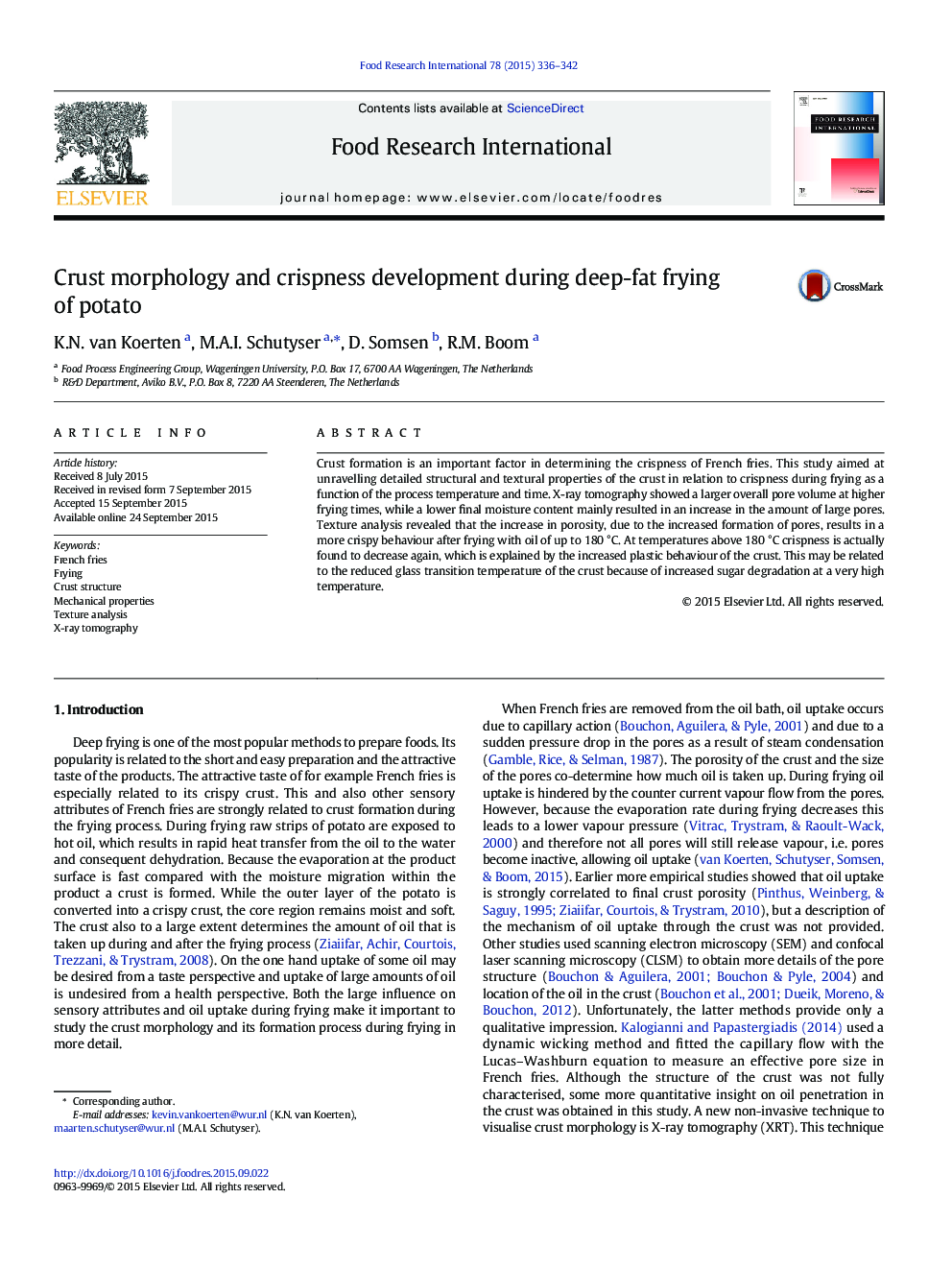| Article ID | Journal | Published Year | Pages | File Type |
|---|---|---|---|---|
| 4561326 | Food Research International | 2015 | 7 Pages |
•French fry crust morphology was linked to crispness using X-ray tomography and texture analysis.•Greater frying times and higher frying temperatures resulted in a more porous structure.•A minimum frying temperature is required for noticeable pore formation.•A higher porosity will generally result in a higher perceived crispness.•At frying temperatures over 195 °C, sugar degradation results in a more plastic, less crispy crust
Crust formation is an important factor in determining the crispness of French fries. This study aimed at unravelling detailed structural and textural properties of the crust in relation to crispness during frying as a function of the process temperature and time. X-ray tomography showed a larger overall pore volume at higher frying times, while a lower final moisture content mainly resulted in an increase in the amount of large pores. Texture analysis revealed that the increase in porosity, due to the increased formation of pores, results in a more crispy behaviour after frying with oil of up to 180 °C. At temperatures above 180 °C crispness is actually found to decrease again, which is explained by the increased plastic behaviour of the crust. This may be related to the reduced glass transition temperature of the crust because of increased sugar degradation at a very high temperature.
